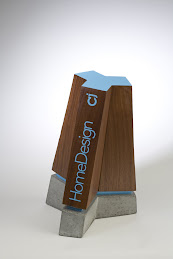So the point of Project S is to investigate using a
prebagged Type S masonry mortar for a concrete
countertop base. This project is moving pretty quickly because I am using the selected mixture for the new grill top. Yesterday I put together a few mixtures and am using 1-day compressive strength
asfor iteration.
I am going to be conservative and say 1-day values are 40% of 28-day compressive strength. Mixture variables were water-to-cement ratio and latex addition rate, things easily purchased or modified for the home do it
yourselfer.
Mixture S1.0 - Standard mortar mixed per manufacturer's recommendations. That is 1/5 gallons of water per 80lb bag, resulting in a water-to-cement ratio of 0.79. This was a very workable mixture.
Mixture S1.1 - Same as above but with 1:1 water to latex. Latex bonding agent, this was
Sika Latex R from Home Depot, adds tensile strength, reduces permeability, and reduces efflorescence in high lime mixtures such as mortar and block mixes. Slightly less workability but much less efflorescence.
Mixture S1.2- Same as above but only using latex. Low cost latex bonding agent sold at home improvement stores is about 7% solids/93% water. Although I didn't adjust for this, with equal parts latex replacement the water to cement ratio will drop a little.
Mixture S2.0 - Standard mortar mixture but with water dosed for a 0.60 water-to-cement ratio. This is equivalent to 1 gallon and 20 oz per bag of mortar. This was probably too stiff for a good
countertop mixture.
Mixture S2.1 - Same as above with1:1 latex to water. This was even stiffer.
Mixture S3.0 - Standard mortar mixture but with water dosed for a 0.42 water-to-cement ratio. There was no way to achieve this naturally, so I used a high range water reducer. I know it isn't available, but it was a let's just see situation. This was a very workable mixture.
Mixture S3.1 - Same as above with 1:1
latex to water. This was a very workable mixture.
Results:
S1.0 - 1082 psi 1 day, 2705 psi estimate at 28-days.
S1.1 - 775 psi, 1937 psi
S1.2 - 818 psi, 2045 psi
S2.0 - 1824 psi, 4559 psi
S2.1 - 1565 psi, 3913 psi
S3.0 - 2378 psi, 5944 psi
S3.1 - 1445 psi, 3613 psi
Latex tends to entrain more air so compressive strength tends to go down. I didn't expect it to go down this much. However, the latex did smell a bit funky and may have gone bad. It previous experience 1:1 latex works well in
countertops.
Looking at this data I selected S1.1 as a candidate for full-scale testing. The mix I will be using for the grill top will be hand-mixed in the garage and will take three batches of
1-80lb bag of Type S Mortar ($5.00 each)
1/2 gallon water (
freeish)
1/2 gallon latex bonding agent ($12 per gallon= $6.00)
0.13 lb polypropylene fibers ($6.00 per 1.5 lb bag = $0.50, These can be purchased at local specialty concrete supply stores. One bag will go a long way)
So total cost for melamine, caulk, screws, and concrete is around $75.
 The mix design was pretty simple, 1 bag of Type S mortar, 1 gallon of water, 1/2 gallon of latex modifier, and 5 pcy polypropylene fibers. The latex and fibers went into a bucket and then were broken apart using the mixing paddle on the drill. The water and mortar were mixed together by hand and then the latex and fibers were added.
The mix design was pretty simple, 1 bag of Type S mortar, 1 gallon of water, 1/2 gallon of latex modifier, and 5 pcy polypropylene fibers. The latex and fibers went into a bucket and then were broken apart using the mixing paddle on the drill. The water and mortar were mixed together by hand and then the latex and fibers were added. All of those fibers gave it the consistency of wet manure. This was by far the cheapest countertop mixture I have ever tried.
All of those fibers gave it the consistency of wet manure. This was by far the cheapest countertop mixture I have ever tried. The mortar was pressed into place by hand. It was very workable but needed pressing because of the fibers in the mix. I sprinkled some green dye here and there on the mold surface, just to see how it would turn out.
The mortar was pressed into place by hand. It was very workable but needed pressing because of the fibers in the mix. I sprinkled some green dye here and there on the mold surface, just to see how it would turn out.











